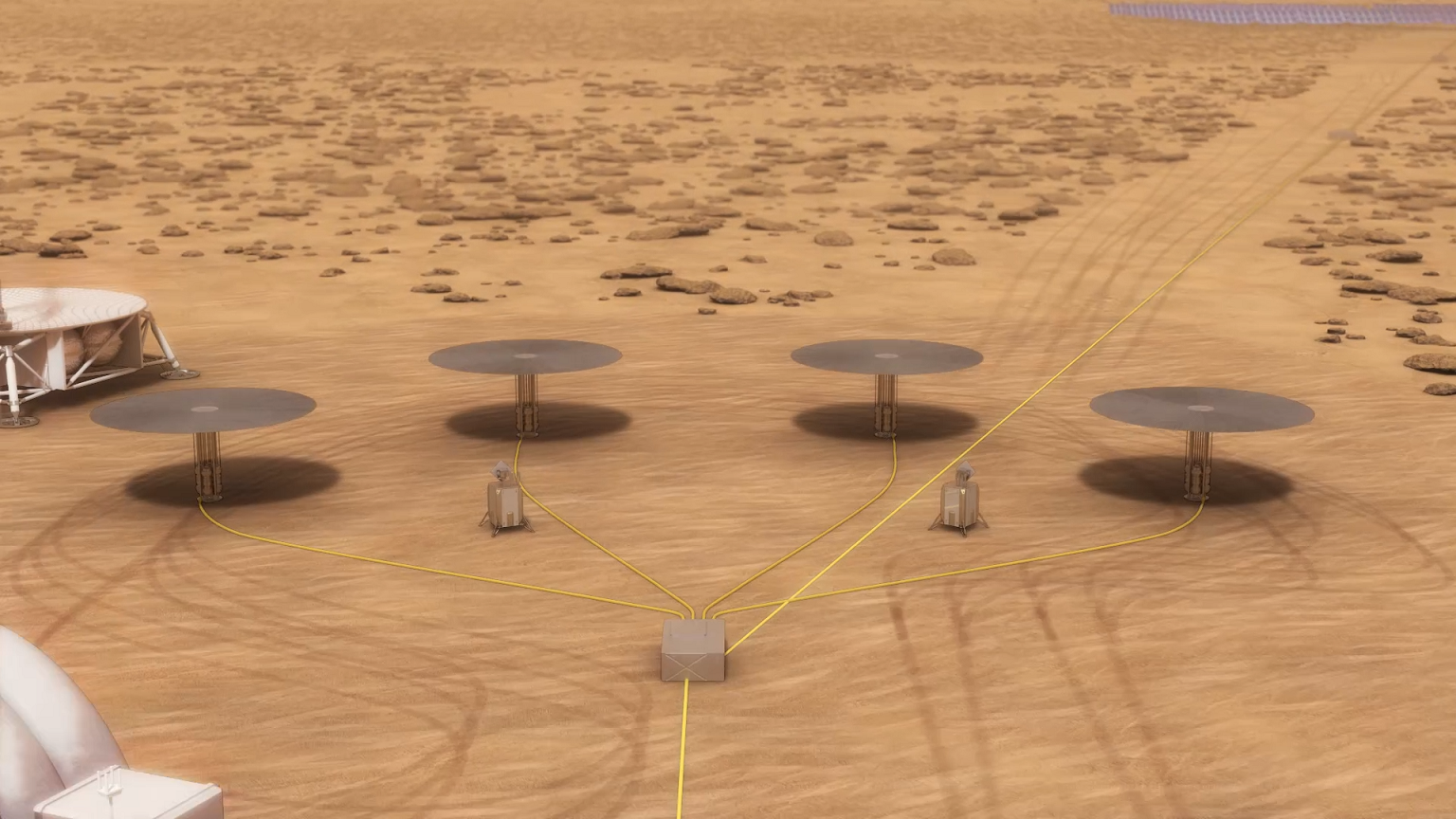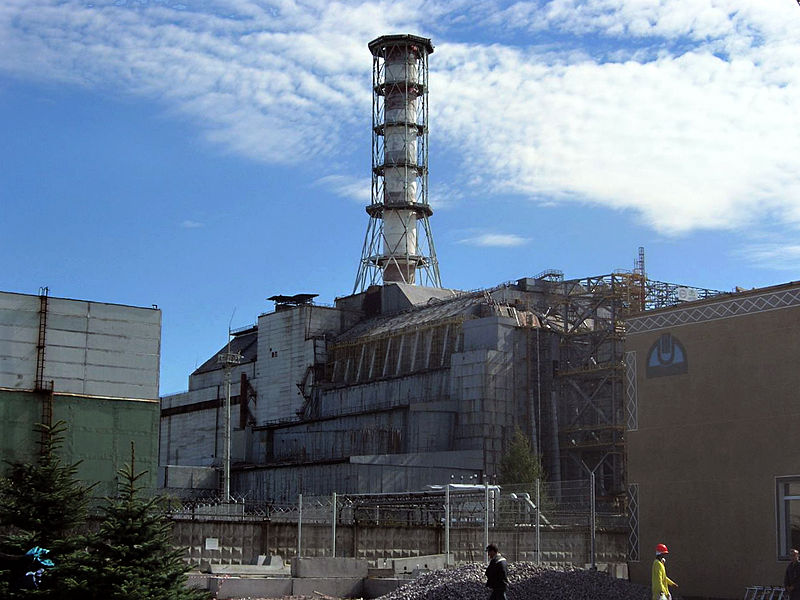
Blog
-
Geiger Readings for Jul 01, 2017
Ambient office = 110 nanosieverts per hourAmbient outside = 110 nanosieverts per hourSoil exposed to rain water = 104 nanosieverts per hourHeirloom tomato from Central Market = 105 nanosieverts per hourTap water = 80 nanosieverts per hourFilter water = 73 nanosieverts per hourDover sole – Caught in USA = 102 nanosieverts per hour -
NASA Is Working On Small Fission Reactors For Mars Habitats
I have blogged before about NASA’s use of nuclear isotopes for thermal batteries in space probes. Nuclear batteries provide the long term reliable and maintenance free power needed for long space missions. Now NASA is considering the use of nuclear fission reactors fueled with uranium for installations on Mars.
In the 1960s, NASA worked on fission reactors for use in space missions. The Systems for Nuclear Auxiliary Power (SNAP) research project resulted in two types of nuclear reactors. The first system was the radioisotope thermoelectric generators (RTG) which utilize heat from the decay of radioactive elements such as plutonium to generate electricity. The RTGs have provided power for dozens of space probes.
The second technology developed by the SNAP program was a fission reactor called the SNAP-10A. It was the only U.S. nuclear power reactor that has even operated in space. After launch in early April of 1965, it ran successfully for forty three days before the failure of unrelated equipment in the spacecraft brought an end to the demonstration.
NASA has provided funds for other nuclear power technology development projects after SNAP but those projects were ultimately abandoned for a variety of reasons including problems with funding, political issues and technical problems.
In 2010, NASAs interest in fission reactors was reawakened because of a study reviewing options for power systems to be used in space missions. In 2014, NASA’s Game Changing Development program provided funds for a program called Kilopower. The goal of this fifteen million dollar project was to build and test a small nuclear fission reactor by September 30, 2017 at the Nevada National Security Site near Las Vegas. The testing is scheduled to be completed by January of 2018. If the tests are successful, then NASA will begin work on a bigger system for testing on Mars or other long space mission.
The Kilopower reactor is about six and a half feet tall. It is designed to produce as much as a kilowatt of electricity. However, the test reactor will not include the Stirling engines that are part of the full design. The Stirling engines convert the energy of the fission reactors into heat. The tests will use thermal simulators to verify that the reactor is generating the desired output.
NASA engineers estimate that human expeditions to Mars will require systems that can generate about forty kilowatts of power. The greatest power requirements for future human Mars expeditions will be the equipment that is needed to produce fuel, air, water, run the habitat and power scientific equipment. NASA plans call for sending four or five small ten kilowatt fission reactors to Mars.
NASA considered the use of solar panels to generate electricity on Mars but that would restrict missions to areas of Mars that received enough sunlight to provide the needed energy. The places on Mars that receive the most sunlight only get about a third of the solar energy that sunny places receive on Mars. There is also the problem of the regular dust storms on Mars that would block sunlight even in sunny areas.
Artist’s concept of four nuclear fission reactors on Mars:
-
Geiger Readings for Jun 30, 2017
Ambient office = 110 nanosieverts per hourAmbient outside = 110 nanosieverts per hourSoil exposed to rain water = 104 nanosieverts per hourCrimini mushroom from Central Market = 105 nanosieverts per hourTap water = 80 nanosieverts per hourFilter water = 73 nanosieverts per hour -
Nuclear Weapons 286 – Sandia National Laboratory Invents Better Scintillators To Detect Smuggled Radioactive Materials
Researchers at Sandia National Laboratories (SNL) have been working on the science of scintillators which can be used to detect nuclear threats. They have made a significant breakthrough that will allow such devices to be both more efficient and cheaper to make. The new scintillators are made of an organic glass which is a carbon-based material that can be melted but does not crystallize when it is cooled. It also does not become translucent or opaque when cooled.
For forty years, the crystalline form of a molecule called trans-stibene has been the best material for scintillators. Trans-stibene can tell the difference between gamma rays which are common in the natural environment and neutrons which are primarily produced by materials such as plutonium and uranium which are dangerous radioactive materials that can be used to make weapons. Trans-stibene produces bright light in the presence of both of these types of radiation. Unfortunately, trans-stibene is very expensive to produce and is not common in devices used outside of a laboratory.
The most common materials used in scintillators for use in the field are plastic. They are cheap and can be made into large shapes which is important for the sensitivity of the scintillator. Plastics are not good at distinguishing gamma rays and neutrons. The detectors have to include a tube of helium to make this distinction. The particular isotope of helium used for these tubes is rare, expensive and non-renewable which makes the detectors more expensive and complex. Plastics are also less sensitive and emit less light than trans-stibene.
SNL began working on scintillator technology in 2010 with the goal “strengthen national security by improving the cost-to-performance ratio of radiation detectors at the front lines of all material moving into the country.” The team worked on combining the best and most sensitive scintillator material with the lower cost of less sensitive materials.
The SNL team tested different scintillator materials that they had synthesized to better understand the relationship between molecular structures and radiation detection properties. They were able to create scintillator materials that could differentiate between dangerous radioactive materials that could be use for weapons and other non-threatening nuclear materials used in industry and medicine.
A major breakthrough happened in June of 2016 with the realization that scintillators were a lot like light-emitting diodes (LEDs). LEDs produce light when electrical current is supplied to a material. Scintillators produce light when bombarded with radiation. Depending on the intensity of light and the speed of the appearance of the light, the nature of the radiation can be identified. It turned out that fluorine, a light emitting material used in some LEDs could be included in the scintillator compounds being made by the lab. This led to the best combination of features including stability, transparency and brightness.
The organic glasses being developed at SNL are much brighter than the plastics and they can distinguish gamma rays from neutrons. The incorporation of fluorene yielded stable organics glasses that could be made into large shapes for detectors that could be deployed for wide use. The next step is to create prototype detectors that can be tested in real life conditions. The team also needs to give their new scintillators the ability to tell the difference between dangerous radioactive materials and normal-use radioactive materials. The National Nuclear Security Administration is funding the project for an additional two years.
-
Geiger Readings for Jun 29, 2017
Ambient office = 115 nanosieverts per hourAmbient outside = 148 nanosieverts per hourSoil exposed to rain water = 154 nanosieverts per hourAvocado from Central Market = 103 nanosieverts per hourTap water = 116 nanosieverts per hourFilter water = 110 nanosieverts per hour -
Nuclear Reactors 286 – Cyberwarfare Poses Unacceptable Danger To U.S. Infrastructure Including Nuclear Power Plants
In 2010, the Stuxnet computer worm was discovered in the centrifuge control systems in Iran’s nuclear program. It did a great deal of damage to the infected systems. It was designed to influence control systems for industrial equipment. Among other things, it caused some of the centrifuges to spin so fast that they were destroyed. Although neither country has admitted anything, it is commonly assumed that the U.S. and Israel created the worm to attack Iran and retard its nuclear program.
There have been many hacking attacks on various public and private computer systems in the U.S. in the past decades. Pentagon computers have been accessed illegally raising national security concerns. Commercial databases have been hit and the financial and personal information of millions of Americans has stolen.
The Russian attack on political party email systems and voting registration databases in 2016 influenced the U.S. Presidential and Congressional elections. It has not yet been revealed to what degree these attack may have altered the outcome of the elections. This sustained and massive attack on the computer systems that underpin our democracy has brought the issue of computer attacks to broader public awareness.
There has been a growing concern over the last few years that major infrastructure like power systems in the U.S. might be attacked by malicious software in what is being called cyberwarfare. A television news show demonstrated how a computer attack could cause a generator at a power station to explode. Hydroelectric systems could be hacked to release water and flood downstream communities. Traffic systems could be hacked to cause massive traffic jams. Financial systems could be crashed wiping out billions of dollars. One of the biggest fears is that a computer attack on the systems that operate a nuclear power plant could cause a major nuclear accident that would threaten millions of people.
This week, there was a major malware attack on companies around the world. The Petya virus was something called ransomware. In this type of attack, all the records on the infected computer are encrypted and the perpetrators then demand ransom in return for a key to decrypt the files. One of the targets hit in the attack was a nuclear power plant in Chernobyl. A system that monitored radiation levels was encrypted and the operators could not access the records of operations. They had to manually monitor radiation levels.
Now ABC has reported that a U.S. nuclear power plant was also a victim of the ransomware attack. Fortunately the attack penetrated and encrypted administrative computer systems at the plant and did not hit any operational or safety systems. No safety alert was issued by the Nuclear Regulatory Commission or the International Atomic Energy Agency. This indicates that attack posed little risk to public safety or the environment.
As I have commented in the past, the level of computer security in the U.S. public and private computer systems is abysmal. Governmental computer systems at all levels are chronically underfunded and behind the latest technology including security. Private companies are too cheap to install decent security unless forced to by the government. Hopefully, this situation can be remedied before there is a truly horrific event like the melt down of a nuclear power plant.
Chernobyl Nuclear Power Plant:
-
Geiger Readings for Jun 28, 2017
Ambient office = 87 nanosieverts per hourAmbient outside = 132 nanosieverts per hourSoil exposed to rain water = 137 nanosieverts per hourHeirloom tomato from Central Market = 85 nanosieverts per hourTap water = 100 nanosieverts per hourFilter water = 85 nanosieverts per hour






